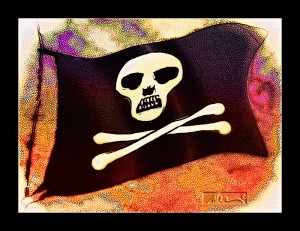All image-makers owe something to those who came before.
As creative people, we tend to use a little of what we know of the works we admire in our own work.
Traditionally, has been a legitimate way to work for most of us. We work on what we know and draw on the tools at hand. We use the work of others to learn and to somehow create a new style that we can call our own. We take a little from here and a little from there, mix it with some creative talent, a bit of insight and transform it into something that is completely new. In the end, we have created something that becomes uniquely our own.
Photographers are no different. The most important thing about producing a photographic image is in the seeing. That is called vision. The execution of that seeing and the production of the final image are a major part of the expression and are the ultimate means of communicating that vision. Most great work draws on all of the artist’s skills to accomplish the final results. It is called creativity. Creativity used to mean the making of something from start to finish. It used to require a bit of know how, a bit of skill and a lot of vision.
While seeing is the most important element in photography, it relies on the skill of the image-maker to translate the vision into a visual form. For most of the history of the medium, that translation became an artist’s style. The artist invented his own look and feel to the work. With the exception of the camera used, the image-maker did nearly all the work. Artistic photographers came up with hundreds of interesting techniques, approaches, and variations to produce their unique signature looks.
In the new world of camera and phone apps much of what some people think is creative happens because of software engineers who appropriated those looks from the real creative artists who originated them.
That appropriation of originality has a lot of people offended over the ease of “making”, or “creating” certain kinds of app produced image effects. With apps, engineers who got the concepts from real artists by simply appropriating them into their software have done most of the creative work for you.
If you look a bit deeper, you might see that any after-market creativity using camera apps is minimal at best.
Some may argue that the photographer’s job is simply to see and that apps are merely brushes of sorts for applying an appropriate look to an image. To an extent, I would agree. However, there are a few things that might be important for all of us to consider.
Real artistic image-makers worked long and hard for years to perfect their style of working only to have it ripped off by a handful of money driven software engineers. The artist gets nothing for his/her efforts; the app makers reap the monetary reward while Joe iPhony gets a nice pat on the back for doing next to nothing.
While many have adapted the use of apps, I am not trying to tell anyone what to do. I am simply stating where the ideas originated and how they got to be what they are now.
Nothing about the using of apps is going to change. Like them, love them or hate them, apps are more than likely here for the long haul. However, once people realize that there might be a few creative limitations; they will be seen as a fad, which will be relatively short lived.
Granted that when used by those who have the skill and the vision, photo apps can be useful for producing interesting imagery. That is not what I am debating. rather it is the appropriation of another’s concept.
Call it what you want, but simply using a camera app isn’t nearly as creative as some people seem to think. Unless of course, you can give credit where credit is due – to the original creators and the cookie cutter pirates who fabricate it.
I cover many photographic topics and techniques in my book. – Great Photography Gift Idea for the Holiday.
Please have a look at some of my other posts here.
NOTICE of Copyright: THIS POSTING AS WELL AS ALL PHOTOGRAPHS, GALLERY IMAGES, AND ILLUSTRATIONS ARE COPYRIGHT © JOHN NEEL AND ARE NOT TO BE USED FOR ANY PURPOSE WITHOUT WRITTEN CONSENT FROM THE WRITER, THE PHOTOGRAPHER AND/OR lensgarden.com. THE IDEAS EXPRESSED ARE THE PROPERTY OF THE PHOTOGRAPHER AND THE AUTHOR.


